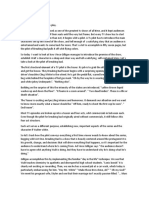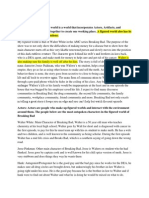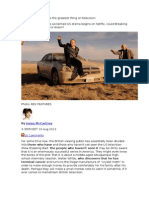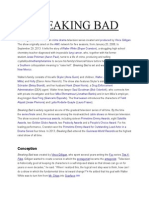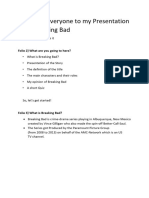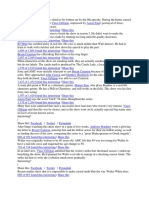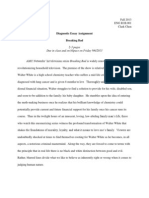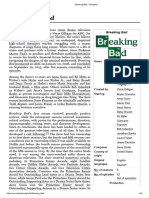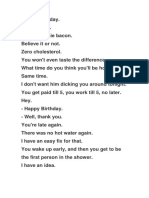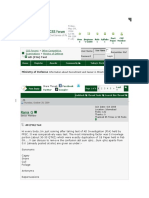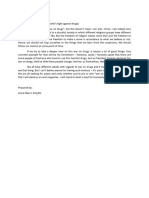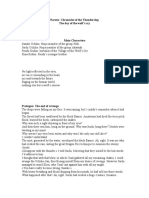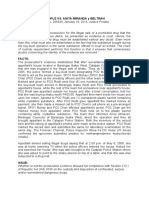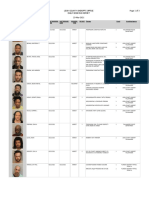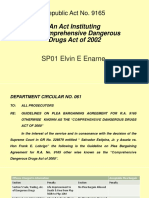TASKr
Grammar: Complete the chart according with the forms of to be in the present simple
1. ¡ l*ál¿*iat harrre.
z. stte ¡*5"i not at home ¡n the morning,
3. w* lJa¿l in the park.
+. rtris i f S__ my nerv láptop.
5. our frisnds tA:E_il on their summer h+tidflyt.
6. Uncle Geórge ;- , S ;a good ñootball pláyer.
7. The dog l_-iL' under the table.
e. He f r I veru funny.
S_
9. The shoes I A?f I wh¡te.
10. You r_¿41_irisnt.
11. Susan ljs-- good at tennis.
12. They i_én¿ i ln the house.
13. His T-shirts \ ifri¿- i coot.
14. My s¡Eter :j¡-_i a g@ swimmer.
15. ShÉ ._tS_, in ltaly.
Pnsitive Negative Interrogative
r. I atn at home I arrlüotathome .&ffrl athome?
"íhe is gl ho*neln{}tertsñ;s á}le¡s irel § harrw;n'{he rfl§{a;rtg b sheelhomg ¡n {trevrernin§?
':"üe ar€
'n*he Pórt< úearenst¡rr*re P{lr.n A¡er*¡e ln {her par\!
4- 7!¡¡s z§ ríV r'u iag}rrP Th¡s i: n<3{,'*ty o,a.u iaP"loP ls 'lh;s rrlyñ€w taP*c¡P?
Ot}r {ri€ñds ErÉ rrie-l .oñ Ate a¿¡r {ri eirrc}S
-tn"theír
- Ourfri€t1<rs gf é€ñ +h€,¡r
s,crrñrn€¡- nol idAyS *he¡r surnrñ€r l¡<¡l;days : S¿rff,r$gr hel;<iays?
ti.Qncle Gerge:s a góOd Ur\cl,gtÉe{ge ' i5 t^t-(}-l o gec(, I B .¿.rnele G&rqq q qelod
fo.r{ua¡i dávet- fe{uail Ptafio{ /Ér {eoJbel} ?toietr? -
lThe doq is dnd€ir +he 'Tf!€ dog ¡si é.rllé¡€r rs 4BrgcJeÉr rjnd€r {h€
{able- ' +h€ 4at,*t€ *abl4
3.*le Ís orery {r;nny +l€;§ no{ v,#ry {uony ís he v€fy Sunn¡'?
?.Th€sh()€§ Ar€ \4ñi*€ Ttrye Eh,e#s ar€-r.p{ wn¡*ee aré lhe s&d76 wlt;-f e?
to-Vo,¿ aee r;qh*
ú
laa are 66rt ¡^;9n*. Areyo*.4ghd?
' Susao iE vaood a{ rbtn;E §os&* ls r§Gf gQOdSl lgn*¡s fs §ya\gd e{ 4*nnis?
* 7ltéy §.r€: io -lhe &o¡¿Se Tt ey Afe nol ia Jáe lto¿lse Aie
--
TAey ¡n dás /bot¿s*
. t',
§" t?i§ /*Sñ;r{s are cAAl ff;s f-sh;t{S 8r€'oo^{ @§ fire h;s "lL§hirls eoo§?
¡¿,tys¡s.l€r tSa good l,ff sist€. I t*lOfAOd ZS mY- sis.4tr A ffaod
S rA,J ; rn r/, €f sut; A mer sút ifi7rDff?
¡S' §ll€ ¡s t'rt -f1,Oly sh€ is ael'i'rt "f-/aly J§ § h€ io rdqlñ
�Reading: The verb be {am, are, is) in a text
Peter Baker i S from Manchester, but PauI and John &re from
[.ondon. Manehester and London ñf€ cities in Hngland. Ilamburg
a city in Gerrnany. §andra ..;§ . at sehool today. Jack and Peter
§re her friends, They ere , . the same class. Mr and Mrs Baker
in
, . "érE on a trip to the USA to visit their corlsin Anne, She a nlce
girl. Peter says: I'Mygrandfather in hospital. I ;a 1"f7 at home
with my grandmother." What time ,'s it? It _ ; § . , I o'clock.
Writingl The verb be in a paragraph
Writeashortparagraphintrtdueing yource§yourfamilyandfrlendswingtheverb
to be in simple present. (rtr liues)
Me and myfami§
Hi my name is blablabla......
Hello, rny narle is 2o.ge €nr;fiae {scobar ,y'oroles,
-Z am J',,,vei/y e;ghr' ¡iear1 o7d ?nd _f arn {.o.rt
?ogn/a,Co/oná,'a, My /s¡pr;/e co/or ¡s álue ,f
/ole @y', s/eep anj /r,qvel and oa/ure.
-f /;¡e in ?ab/o v/r7e:usag¡¿;//o 'and in an alar/ardeny'
"v¡/h my mom: a i.;end m y' pels- Hy
rnAms nAme is Hqr{ha Lucia. She ¡s f.om
SoqoJa
v a,ld she i-s -leacher ;ñ a roué/¡c scia/
ni /qien,/s naru€ is /uis, //e ¡s rpy' /.orr-t
?Ag"/a,, bal,rle¡ orri./es c¿theo He ulas a b?oi
he" is /,zen/y s€veo years old and He s/otd;e,s
-Socia/ S.c;eace: l.ic€Dc il/¿re a/ ila/,ona l?eda-
gag ic C/o - ,rersi /y. -Z ha re /,.uo dogsr"Y,aná '- aool
--, is -lhs Hash; is rvrün')
Va=h; Yána
�Listening:
Transcript:
Hi, I´m Michael.
This is lesson for screen play.
Breaking bad has been praised as one of the greatest tv shows of all time, and it kept
audiences engaged and on the edge of their seats until the very last frame. But every TV
show has to start somewhere, and more often than not, it begins with a pilot. A Tv pilot has
to introduce the main characters, set up the world of the show, and tell enough of a satisfying
story that an audience is entertained and wants to come back for more. That´s a lot to
accomplish in fifty seven pages, but the pilot of Breaking Bad pulls it off whit flying colors.
So today I want to look at how Vince Gilligan manages to introduce the premise of the show,
establish Walt´s character in a deep and clear way and tell a satisfying, self-contained story.
Let´s take a look at the pilot of breaking bad.
The first structural element of a TV pilot is the teaser. Its job is to grab the attention of the
viewer and get them hooked. They Breaking Bad teaser begins with a surprising opening
image. Inside the driver's knuckles Cling White to the wheel. He's got the pedal flat. Scared,
breathing fast. His eyes bug wide behind the faceplate of his gas mask. "Oh by the way he
is wearing a gas mask"." That and white jokey Underpants”. “Nothing else".
Building on the surprise of this, the intensity of the stakes are introduced. "yellow Brown
liquid washes up and down the floor". "It foams in a scum around". " Two dead bodies".
These is a life or death situation".
The Teaser is exciting and puzzling intense and humorous. It demands our attention and we
want to know more-exactly what a teaser should be." Off him, ready to shoot the first cop he
sees". " End teaser".
Most TV episodes are broken up into a teaser and four acts, whit commercials in between
each. Even though the pilot for breaking bad originally aired without commercials, it still
follows this four act structure.
Each act serves a different purpose, establishing new, important aspects of the series and
the character of Walter white.
So let's track how the pilot conveys everything a first time viewer needs to know about the
series, beginning whit Act One. Breaking Bad is a show that is heavily centered around the
protagonist. It is his growth, change, and decisions that will drive everything that happens,
so it’s important for the audience to understand where he's coming from. As Vince Gilligan
says " the audience doesn't have to agree with anything Walt is doing, but they have to
understand why he's doing what he's doing."
Gilligan accomplishes this by implementing the familiar "day in the life" technique. We see
that Walt teaches chemistry to apathetic and disrespectful high school students. "Lonic
bonds" it is clearly not exciting or rewarding. Then, we see he has a second job at a car
wash, which today is particularly embarrassing for him. "Hey Mr. White" " Make those tires
shine, eh?" " Oh my God!" We meet his pregnant wife, Skyler and see that their marriage
�isn't exactly passion-filled. "... Mars rover photographs, I mean the detail is really supposed
to be amazing." We meet his son, Walter, Jr, who looks up to his crass uncle Hank. "This is
awesome right here" "Nice, isn't it?" "Yeah"
Hank is a DEA agent who recently executed a substantial drug bust. While this plays an
important role in the pilot, Hank's job is also an ever- present threat that will loom over Walt
for the rest of the show. Together, all this answers the most important question: what is
missing in Walt's life? Act one shows how powerless Walt is. He's passive, diplomatic, and
despite being a brilliant chemist is living a life where he is constantly demeaned. " You've
got a brain the size of Wisconsin but we're not going to hold that against ya!"
By showing us a day in the life of Walter White we see that he's someone who longs for
control and purpose, but lacks is both. It establishes his normal, which prepares us for the
abnormal that strikes at the end of the act one when he suddenly collapses. This is the
inciting incident for the show and the beginning of Walter White's journey.
Translation:
Hola, yo soy Michael.
Esta es lecciones para guión.
Breaking bad ha sido elogiado como uno de los mejores programas de televisión de todos
los tiempos, y mantuvo al público comprometido y al borde de sus asientos hasta el último
cuadro. Pero cada programa de televisión tiene que comenzar en alguna parte, y la mayoría
de las veces, comienza con un piloto. Un piloto de televisión tiene que presentar a los
personajes principales, configurar el mundo del programa y contar una historia lo
suficientemente satisfactoria para que la audiencia se entretenga y quiera volver por más.
Eso es mucho por lograr en cincuenta y siete páginas, pero el piloto de Breaking Bad lo
logra con gran éxito.
Así que hoy quiero ver cómo Vince Gilligan logra presentar la premisa del programa,
establecer el personaje de Walt de una manera profunda y clara y contar una historia
satisfactoria y autonomo. Echemos un vistazo al piloto de Breaking Bad.
El primer elemento estructural de un piloto de televisión es el adelanto. Su trabajo es captar
la atención del espectador y engancharlo. El adelanto de Breaking Bad comienza con una
sorprendente imagen inicial. Por dentro el conductor se aferra con firmeza al volante. Tiene
el pedal a fondo, asustado y respira rápido. Sus ojos se abren de par en par detrás de la
placa frontal de la máscara de gas. "Oh, por cierto, lleva una máscara de gas". "Eso y unos
pantaloncillos blancos". "Nada más".
Sobre la base de la sorpresa de esto, se introduce la intensidad de lo que está en juego.
"líquido amarillo y marrón lavan de arriba a abajo el suelo". "Se hace espuma alrededor".
"Dos cadáveres". Es una situación de vida o muerte ".
El adelanto es emocionante y misterioso, intenso y divertido. Exige nuestra atención y
queremos saber más exactamente qué debe ser un adelanto. "Fuera de él, listo para
disparar al primer policía que ve". "Fin del adelanto".
�La mayoría de los episodios de televisión se dividen en un adelanto y cuatro actos, con
comerciales entre cada uno. Aunque el piloto de Breaking Bad originalmente se emitió sin
comerciales, éste aún sigue esta estructura de cuatro actos.
Cada acto tiene un propósito diferente, estableciendo aspectos nuevos e importantes de la
serie y el personaje de Walter White.
Así que rastreemos cómo el piloto transmite todo lo que un espectador por primera vez
necesita saber sobre la serie, comenzando con el primer acto. Breaking Bad es un programa
que se centra en gran medida en el protagonista; es su crecimiento, cambio y decisiones
las que impulsarán todo lo que sucede, por lo que es importante que la audiencia
comprenda de dónde viene. Como Vince Gilligan dice "la audiencia no tiene que estar de
acuerdo con nada de lo que está haciendo Walt, pero tienen que entender por qué hace lo
que hace".
Gilligan logra esto implementando la conocida técnica del "día en la vida". Vemos que Walt
enseña química a estudiantes de secundaria apáticos e irrespetuosos. "Vínculos solitarios"
claramente no es emocionante ni gratificante. Luego, vemos que tiene un segundo trabajo
en un lavado de autos, lo que hoy es particularmente embarazoso para él. "Oye Sr. White"
"Haz brillar esos neumáticos, ¿eh?" " ¡Oh Dios mío!" Conocemos a su esposa embarazada,
Skyler, y vemos que su matrimonio no está exactamente lleno de pasión. "... Fotografías
del rover de Marte, quiero decir, se supone que el detalle es realmente asombroso".
Conocemos a su hijo, Walter, Jr, que admira a su grosero tío Hank. "Esto es increíble aquí
mismo" "Agradable, ¿no?" "Si"
Hank es un agente de la DEA que recientemente ejecutó una importante incautación de
drogas. Si bien esto juega un papel importante en el piloto, el trabajo de Hank también es
una amenaza omnipresente que se cierne sobre Walt durante el resto del programa. En
conjunto, todo esto responde a la pregunta más importante: ¿qué falta en la vida de Walt?
El primer acto muestra cuán impotente es Walt. Es pasivo, diplomático y, a pesar de ser un
químico brillante, lleva una vida en la que es degradado constantemente. "¡Tienes un
cerebro del tamaño de Wisconsin, pero no vamos a reprocharte eso!"
Al mostrarnos un día en la vida de Walter White, vemos que es alguien que anhela control
y propósito, pero que carece de ambos. Establece su normalidad, que nos prepara para lo
anormal que golpea al final del acto cuando colapsa repentinamente. Este es el incidente
que incita al programa y el comienzo del viaje de Walter White.
